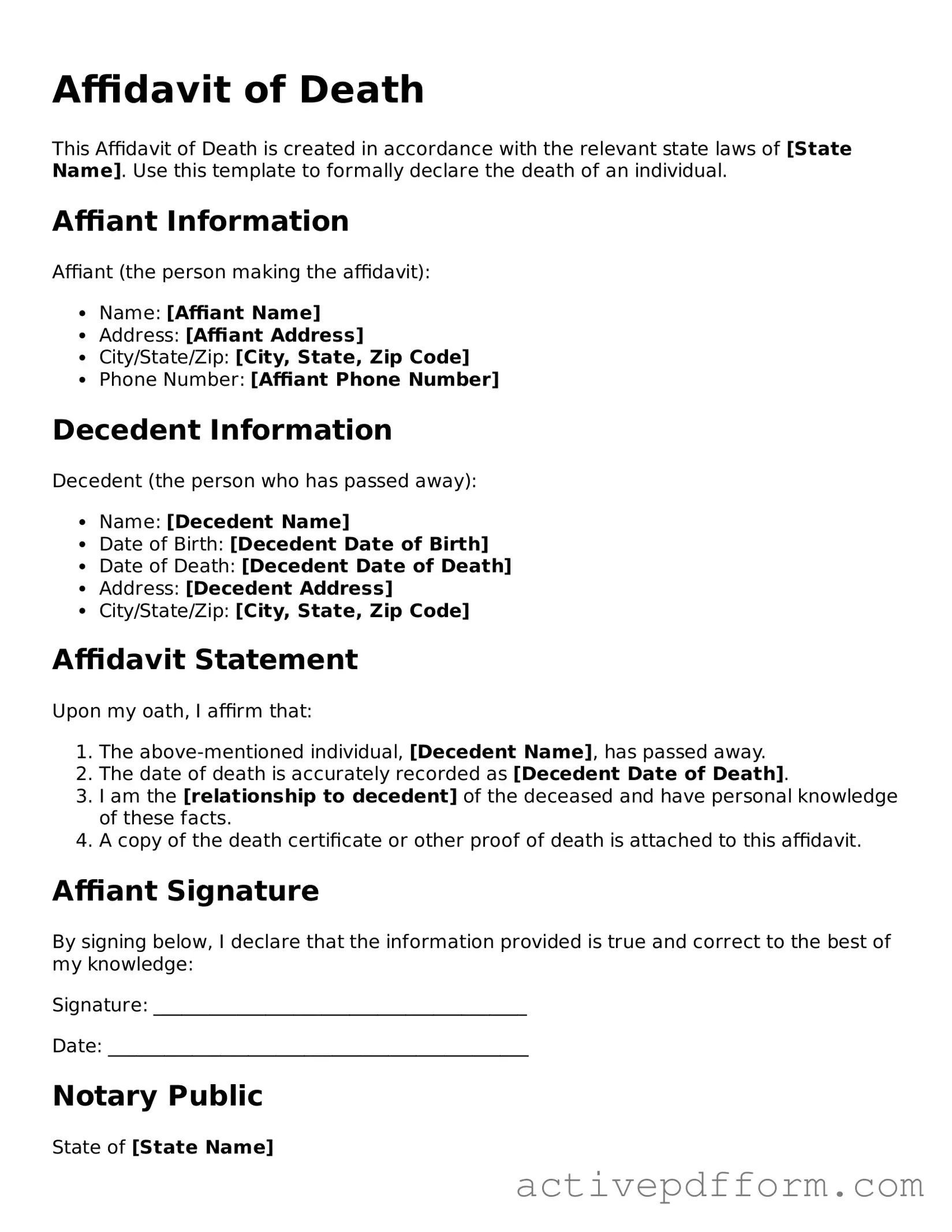Affidavit of Death
This Affidavit of Death is created in accordance with the relevant state laws of [State Name]. Use this template to formally declare the death of an individual.
Affiant Information
Affiant (the person making the affidavit):
- Name: [Affiant Name]
- Address: [Affiant Address]
- City/State/Zip: [City, State, Zip Code]
- Phone Number: [Affiant Phone Number]
Decedent Information
Decedent (the person who has passed away):
- Name: [Decedent Name]
- Date of Birth: [Decedent Date of Birth]
- Date of Death: [Decedent Date of Death]
- Address: [Decedent Address]
- City/State/Zip: [City, State, Zip Code]
Affidavit Statement
Upon my oath, I affirm that:
- The above-mentioned individual, [Decedent Name], has passed away.
- The date of death is accurately recorded as [Decedent Date of Death].
- I am the [relationship to decedent] of the deceased and have personal knowledge of these facts.
- A copy of the death certificate or other proof of death is attached to this affidavit.
Affiant Signature
By signing below, I declare that the information provided is true and correct to the best of my knowledge:
Signature: ________________________________________
Date: _____________________________________________
Notary Public
State of [State Name]
County of [County Name]
Subscribed and sworn to before me this _____ day of ____________, 20__.
Signature of Notary: ________________________________
My Commission Expires: _____________________________
